
10 Best Places for Autumn Leaves in Kyoto & When to Enjoy in 2024
- Written by: WESTPLAN
Kyoto's autumn spectacle is a sight to behold, with its foliage transforming the city into a living masterpiece. In fact, autumn is one of the most popular times to visit Kyoto.
In 2024, the best time to see fall foliage in Kyoto is from around November 26 to December 8, when the Japanese maples turn red and ginkgo shift to gold.
During this time, the fall foliage and the distinctly Japanese backdrops of the city’s temples and shrines converge to create unforgettable memories.
Here are ten excellent spots where you can fully enjoy Kyoto in autumn and take in the city’s elegant atmosphere.
When is the best time to see fall colors in Kyoto?
Even if you're not comfortable calling yourself a leaf peeper, you won't want to miss the gorgeous fall foliage in Kyoto. The best time to see fall colors in Kyoto is from late November to early December.
As Kyoto is so popular for the fall foliage, be sure to book a hotel at least two months in advance.
Also, since the average temperature in Kyoto in autumn is around 7.8℃/46.04℉, it can be fairly chilly, so be sure to bring warm clothes.
10 Best places for autumn colors in Kyoto
1. Kiyomizu-dera Temple: This is the true meaning of Kyoto in autumn!

Kiyomizu-dera Temple overlooks the Higashiyama area and is perfect for getting the feeling of ancient Kyoto. The nearest station is Kiyomizu-Gojo Station on the Keihan Railway, and from there, it’s about a 25-minute walk east to the temple. A top tourist draw, the temple is also close to other attractive sites like Ninenzaka and Sannenzaka.
The Kyoto autumn colors are in full view from Kiyomizu-dera’s hilltop main hall, also called the “Kiyomizu Stage.” The carpet of autumn colors spreading across the Kin-un-kyo Gorge below is breathtaking, and feeling the refreshing air while taking in the view from the main hall is the epitome of “Autumn in Japan.”
The best time to enjoy Kyoto autumn leaves at Kiyomizu-dera Temple is from late November to early December.

When viewed from the Koyasu Pagoda, the stage itself stands out tastefully among the autumn colors. From November 18–30, 2024, there will be special evening hours so visitors can see the illuminated autumn leaves.
- Hours: 6 AM–6 PM (During the special autumn evening viewing (November 18–30, 2024), last entry at 9 PM, open until 9:30 PM; varies by season)
- Admission: Adults (high school students and above) 500 yen, Middle and elementary school students 200 yen
-

-
Address
1-294 Kiyomizu, Higashiyama-ku, Kyoto City, Kyoto Prefecture, 605-0862
View Map -
Nearest Station
Gionshijo Station (Keihan Line)
25 minutes on foot
- Phone Number 075-551-1234
-
Address
1-294 Kiyomizu, Higashiyama-ku, Kyoto City, Kyoto Prefecture, 605-0862
2. Tofukuji: A sea of maple leaves right before your eyes

Tofukuji is the main temple of the Tofukuji School of the Rinzai sect and boasts the largest temple hall in Kyoto. The name “Tofukuji” is a combination of the names of Nara’s Todaiji and Kofukuji temples. Many cultural properties have been preserved on the site, including the country’s oldest temple gate.
Maples at Tofuku-ji Temple begin to turn red in mid-November and are at their best from late November to early December. Seen from Tofukuji’s Tsutenkyo Bridge, they look like a sea of red clouds, giving viewers a heavenly perspective.
Since it’s very crowded in autumn, photography may be prohibited in Tsutenkyo. However, if you go down to the Sengyokukan Gorge, you’ll have the opportunity to take some spectacular pictures.
From Keihan Tofukuji Station or JR Tofukuji Station, it’s an easy 10-minute walk to the temple.
- Hours: 9 AM–4 PM (Last entry 4 PM, gates close at 4:30 PM); 1st Sunday of November and December: 8:30 AM–4 PM; 1st Monday of December to March 31: until 3:30 PM (Last entry 3:30 PM, gates close at 4 PM)
- Admission: Tofukuji Main Temple Garden (Hōjō): Adults 500 yen, Elementary and middle school students 300 yen; Tsūten Bridge & Kaisan Hall: Adults 600 yen, Elementary and middle school students 300 yen; Combo ticket: Adults 1,000 yen, Children 500 yen
- Special Admission (November 9–December 1): Tofukuji Main Temple Garden (Hōjō): Adults 500 yen, Elementary and middle school students 300 yen; Tsūten Bridge & Kaisan Hall: Adults 1,000 yen, Elementary and middle school students 300 yen; Combo ticket: Not available from November 9 to December 8
-

-
Address
15-778, Honmachi, Higashiyama-ku, Kyoto-shi, Kyoto, 605-0981
View Map -
Nearest Station
Tofukuji Station (JR Nara Line)
10 minutes on foot
- Phone Number 075-561-0087
-
Address
15-778, Honmachi, Higashiyama-ku, Kyoto-shi, Kyoto, 605-0981
3. Nijo Castle: Harmony of Kyoto autumn leaves and Honmaru Garden

Nijo Castle is home to several important cultural properties, including the national treasure Ninomaru Goten, the main East Gate, and the corner Southeast Watchtower along the outer moat. Easily accessible via Kyoto Municipal Subway’s Nijojoumae Station, the palace and its three gardens are a major tourist attraction.

Nijo Castle leaves a variety of impressions throughout the four seasons and is even more attractive during the fall foliage season (normally mid-November to early December).
Maple and ginkgo planted along the moat turn bright red and yellow, further inspiring a walk through the castle grounds. The contrast between the complex’s southeast corner and the maples is also beautiful, with a very “Japanese” feel.
The Ninomaru garden is designated as a special scenic site, and Seiryuen Garden is transformed in autumn. Viewers will find a passion for the fascinating imagery of Nijo Castle amidst the serenity.
- Hours: 8:45 AM–4 PM (Gates close at 5 PM)
- Admission: General 1,300 yen (includes Ninomaru Palace viewing), Middle and high school students 400 yen, Elementary school students 300 yen, Free for children under elementary school age (all prices include tax)
- Closed: December 29–31
-

-
Address
541 Nijojocho, Horikawa Nishiiri, Nijo-dori, Nakagyo-ku, Kyoto-shi, Kyoto, 604-8301
View Map -
Nearest Station
Nijojomae Station (Tozai Line)
- Phone Number 075-841-0096
-
Address
541 Nijojocho, Horikawa Nishiiri, Nijo-dori, Nakagyo-ku, Kyoto-shi, Kyoto, 604-8301
4. The Philosopher’s Path: Take a stroll along the river

The Philosopher's Path is so named because the philosopher Kitaro Nishida, who served as a professor emeritus at Kyoto University, and his students would walk in thought along the path. Now, modern walkers come here to enjoy cherry blossoms in spring, fresh greenery in summer, and autumn colors in fall.
The path is built along a canal, making a stroll along the path is pleasing to both the ears and the eyes with the sound of flowing water and the red leaves. There are many unique shops along the way, and it’s fun to stop into a few while enjoying the maple trees outside.
The best viewing is from mid to late November. Getting off at the Ginkakuji-michi bus stop via the Kyoto City Bus is recommended to visit Ginkakuji Temple.
-

-
Address
Kyoto Prefecture Kyoto City Sakyo Ward Jodo Temple Ishibashi Town-Wakaoji Town, 606-8406
View Map -
Nearest Station
Kyoto Station (JR Tokaido Line / JR Biwako Line / JR Tokaido Shinkansen / JR Kyoto Line / JR Sagano Line / JR San-in Line / JR Nara Line / Karasuma Line / Kintetsu-kyoto Line)
40 minutes by bus
- Phone Number 075-761-3863
-
Address
Kyoto Prefecture Kyoto City Sakyo Ward Jodo Temple Ishibashi Town-Wakaoji Town, 606-8406
5. Eikando Zenrinji: An enchanting view of 3,000 Japanese maple trees

Eikando Zenrinji Temple, seen as you go south along the Philosopher’s Path, is so well known for its beautiful autumn colors it has been called “Momiji Eikando” (momiji being the word for Japanese maples) since ancient times. The temple’s Tahoto Pagoda and the 3,000 maple trees surrounding it form a breathtaking scene that has inspired many a poet to celebrate its beauty.

The Tahoto Pagoda is situated atop the highest point on the grounds, making it possible to look out over Kyoto with the striking autumn leaves in the foreground.
During the peak leaf viewing weeks (usually from November to early December), lights make Eikando Zenrinji a dramatic nocturnal sight.
- Dates: November 11 - December 8, 2024
- Hours: 9 AM to 4 PM (Gate closes at 5 PM), Illumination from 5:30 PM to 8:30 PM (Gate closes at 9 PM)
(Note: The Temple Treasures Exhibition and Illumination have alternating schedules; continuous admission is not available) - Admission: General Admission, 1,000 yen; Elementary, Middle, and High School Students, 400 yen. (Illumination viewing for middle school students and above: 700 yen.)
-

-
Address
48, Eikandocho, Sakyo-ku, Kyoto-shi, Kyoto, 606-8445
View Map -
Nearest Station
Keage Station (Tozai Line)
15 minutes on foot
- Phone Number 075-761-0007
-
Address
48, Eikandocho, Sakyo-ku, Kyoto-shi, Kyoto, 606-8445
6. Bishamondo: A carpet of fallen red leaves

Bishamondo derives its name from Bishamonten, one of the seven deities of good fortune said to bring in good luck for the New Year and to whom the temple is dedicated. Known for its autumn leaves, the grounds become aglow with maple leaves. Fallen leaves turn the approach to the main hall into a red carpet, and slowly ascending the stone steps is an exceptional experience.
Additionally, the area around Bishamondo is also dense with autumn colors, creating an amazing atmosphere.
The best time to visit Bishamon-do Temple is from mid-November to early December. Get off at JR/Kyoto Municipal Subway/Keihan Yamashina Station and walk about 20 minutes to arrive at Bishamondo.
- Hours: 9 AM–5 PM (Last entry 4:30 PM); December–February: until 4:30 PM (Last entry 4 PM)
- Admission (Main Hall & Shinden Hall): Adults 700 yen, High school students 400 yen, Elementary and middle school students 300 yen
-

-
Address
18, Anshuinariyamacho, Yamashina-ku, Kyoto-shi, Kyoto, 607-8003
View Map -
Nearest Station
Yamashina Station (JR Kosei Line / JR Tokaido Line / JR Biwako Line)
15 minutes on foot
- Phone Number 075-581-0328
-
Address
18, Anshuinariyamacho, Yamashina-ku, Kyoto-shi, Kyoto, 607-8003
7. Ryoanji: Maple autumn leaves complement the Japanese rock garden

Ryoanji Temple is famous for its rock garden - a dry landscape where fifteen large and small stones are arranged in white gravel. Depending on their imagination, viewers often see the stones as islands and waves, rivers and rocks, and more.
In the Kyoto autumn leaf viewing season (usually from late November to early December), you can see colorful red and yellow maples peeking over the rock garden wall. The leaves complement the garden to form a unique landscape seen only during this brief period.

The red maples surrounding Kyoyochi Pond make a walk around the large pond even more enjoyable. The closest station is Ryoanji Station on the Keifuku Electric Railway. Also, if you walk east on the road in front of Ryoanji, you’ll reach Kinkakuji Temple and its famous golden shrine in about 20 minutes.
- Hours: 8:30 AM–5 PM; December–February: 8:30 AM–4:30 PM
- Admission: Adults 600 yen, High school students 500 yen, Elementary and middle school students 300 yen
-

-
Address
13, Ryoan-ji Goryounoshitacho, Ukyo-ku, Kyoto-shi, Kyoto, 616-8001
View Map -
Nearest Station
Ryoanji Station (Keifuku Dentetsu-kitano Line)
7 minutes on foot
- Phone Number 075-463-2216
-
Address
13, Ryoan-ji Goryounoshitacho, Ukyo-ku, Kyoto-shi, Kyoto, 616-8001
8. Arashiyama: Enjoy the natural gradation of colors around Togetsukyo Bridge


Arashiyama is in the Nishiyama area of Kyoto’s Ukyo Ward. Centered around the Togetsukyo Bridge that spans the Katsura River, it is one of the most scenic spots in Kyoto and hosts countless visitors from Japan and abroad.
From mid-November, Arashiyama’s maple trees are dyed red and yellow, creating a picturesque landscape in striking contrast with the fresh green months. Pictures with colorful mountains in the background and the bridge in front are frequently subjects for social media posts.
To reach Togetsukyo Bridge, get off at JR Saga-Arashiyama Station or Hankyu Arashiyama Station and walk for about 15 minutes. There are plenty of restaurants and souvenir shops in the area to enrich your visit.
-

-
Address
Sagatenryuji Suenobaba Town, Ukyo Ward, Kyoto City, Kyoto Prefecture, 616-8385
View Map -
Nearest Station
Arashiyama Station (Keifuku Dentetsu-arashiyama Line)
3 minutes on foot
- Phone Number 075-411-9990
-
Address
Sagatenryuji Suenobaba Town, Ukyo Ward, Kyoto City, Kyoto Prefecture, 616-8385
9. Kyoto Botanical Gardens: Trees from around the world light up the night

Kyoto Botanical Gardens are Japan's oldest public botanical garden. It is located right next to Kitayama Station on the Kyoto Municipal Subway, giving it easy access.
The southern half of the park features a large flower bed and a symmetrical Western-style rose garden. Conversely, the northern half is home to the natural Naragi-no-Mori forest. Botanical beauty can be appreciated throughout the entire garden, including the Plant Ecology Garden, where flora from all over Japan are planted in conditions close to their natural environment.

In autumn, the area around the forest is uniquely beautiful when species such as Japanese maple (momiji), metasequoia, ginkgo, and Formosan gum change color. From mid-November to late November, the garden is lit up at night, and the beauty of the trees and the colorful leaves is intoxicating.
- Hours: 9 AM–5 PM (Last entry 4 PM)
- Admission: General 200 yen, High school students 150 yen, Free for middle school students and younger; Free for seniors 70 and over, and disability ID holders with proof (all prices include tax)
- Closed: December 28–January 4
-

-
Address
Shimogamo Hangi Town, Sakyo Ward, Kyoto City, Kyoto Prefecture, 606-0823
View Map -
Nearest Station
Kitayama Station (Karasuma Line)
- Phone Number 075-701-0141
-
Address
Shimogamo Hangi Town, Sakyo Ward, Kyoto City, Kyoto Prefecture, 606-0823
10. Kifune Shrine: A landscape of lanterns and autumn leaves


Although its construction date is unknown, Kifune Shrine is known to be extremely old. About an hour from Kyoto Station by train or bus, it's a little far, but you’ll be able to witness the unspoiled natural beauty of the mountains and a different atmosphere than that of the central areas.
The torii gates at Kifuneguchi (the shrine’s entrance) and vermillion lanterns that line the steps between the two are truly impressive. When the autumn colors arrive in early November, and with the lanterns alight, the scene becomes even more moving. Every year, the leaves themselves are also illuminated in the evening and take on an air of fantasy.
-

-
Address
180, Kuramakibunecho, Sakyo-ku, Kyoto-shi, Kyoto, 601-1112
View Map -
Nearest Station
Kibuneguchi Station (Eizan Dentetsu-kurama Line)
30 minutes on foot
- Phone Number 075-741-2016
-
Address
180, Kuramakibunecho, Sakyo-ku, Kyoto-shi, Kyoto, 601-1112
Enjoy the uniqueness of Kyoto in autumn!
Kyoto’s famous shrines and temples, which are typically calm, quiet places, become more lustrous in autumn, with some lighting up their fall foliage to add to the fascinating atmosphere. Be sure to visit Kyoto during this special season!
*This article was originally published in June 2020 and updated in August 2024. Please refer to official websites for the latest information.
- Area
- Category
*Prices and options mentioned are subject to change.
*Unless stated otherwise, all prices include tax.
Recommended places for you
-
Goods
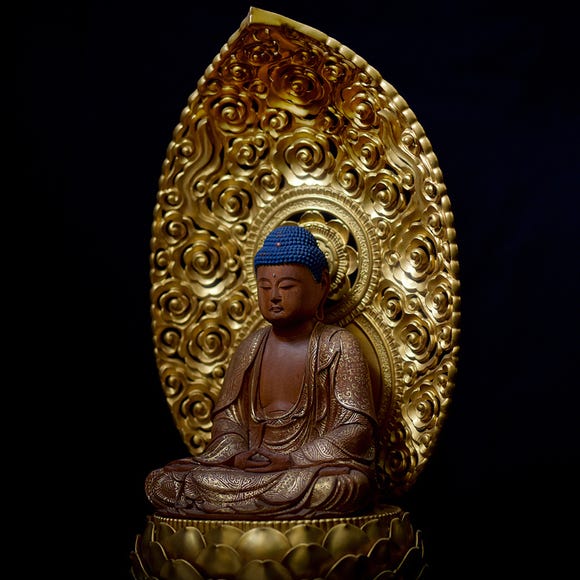
Yoshida Gennojo-Roho Kyoto Buddhist Altars
Gift Shops
Nijo Castle, Kyoto Imperial Palace
-

Kanzenkoshitsuyakinikutabehodai Gyugyu Paradise Sannomiya
Yakiniku
Kobe, Sannomiya, Kitano
-

Jukuseiniku-to Namamottsuarera Nikubaru Italian Nikutaria Sannomiya
Izakaya
Kobe, Sannomiya, Kitano
-

ISHIDAYA Hanare
Yakiniku
Kobe, Sannomiya, Kitano
-

Kambei Sannomiyahonten
Yakiniku
Kobe, Sannomiya, Kitano
-

Yodobashi Camera Multimedia Umeda Store
Shopping Malls
Umeda, Osaka Station, Kitashinchi
-

Kyoto Prefecture Guide: Destinations, Activities, Travel Advice, Shopping & More
-

teamLab Announces New Permanent Kyoto Museum Opening in Fall 2025
-

Where to See Fireworks in Osaka & Kansai (July–October 2025)
-
Ad

Visiting the Osaka–Kansai Expo? Enjoy These 5 Great Itineraries from Osaka-umeda for Nature and City Lovers
-

Hyogo Prefecture Guide: Destinations, Activities, Travel Advice, Shopping & More
by: Kaori Kimura
-

Dorsett by Agora Osaka Sakai: Stay in a World Heritage Port Town Surrounded by History and the Sea (Newly Opened in 2025)
by: Yotsuka Hizuki
Inspiration for Accommodations
-

Spacious Family Hotel in Namba: 20 Comfortable Stays for Family Fun
-
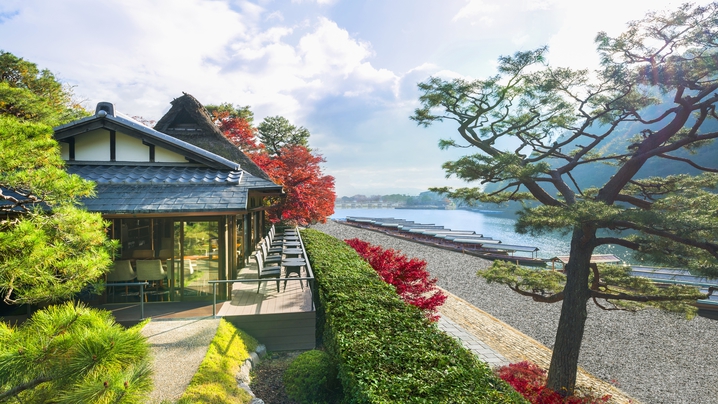
Charming Hotels to Enjoy the Spectacular Views of Arashiyama's Autumn Leaves from Your Room
-

Experience Stunning Views of Osaka Castle from Private Spaces: Top Hotels Near Osaka Castle
-
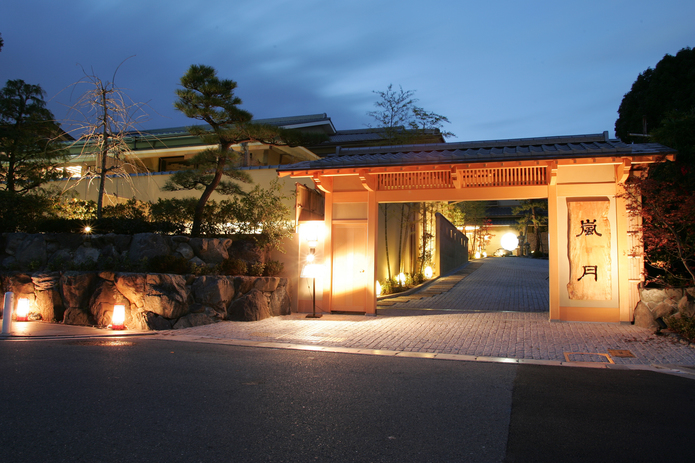
Recommended by Visitors! Arashiyama's Best-Rated Hotels
-

Family-Friendly Universal Studios Japan Hotel with Excellent Access
-
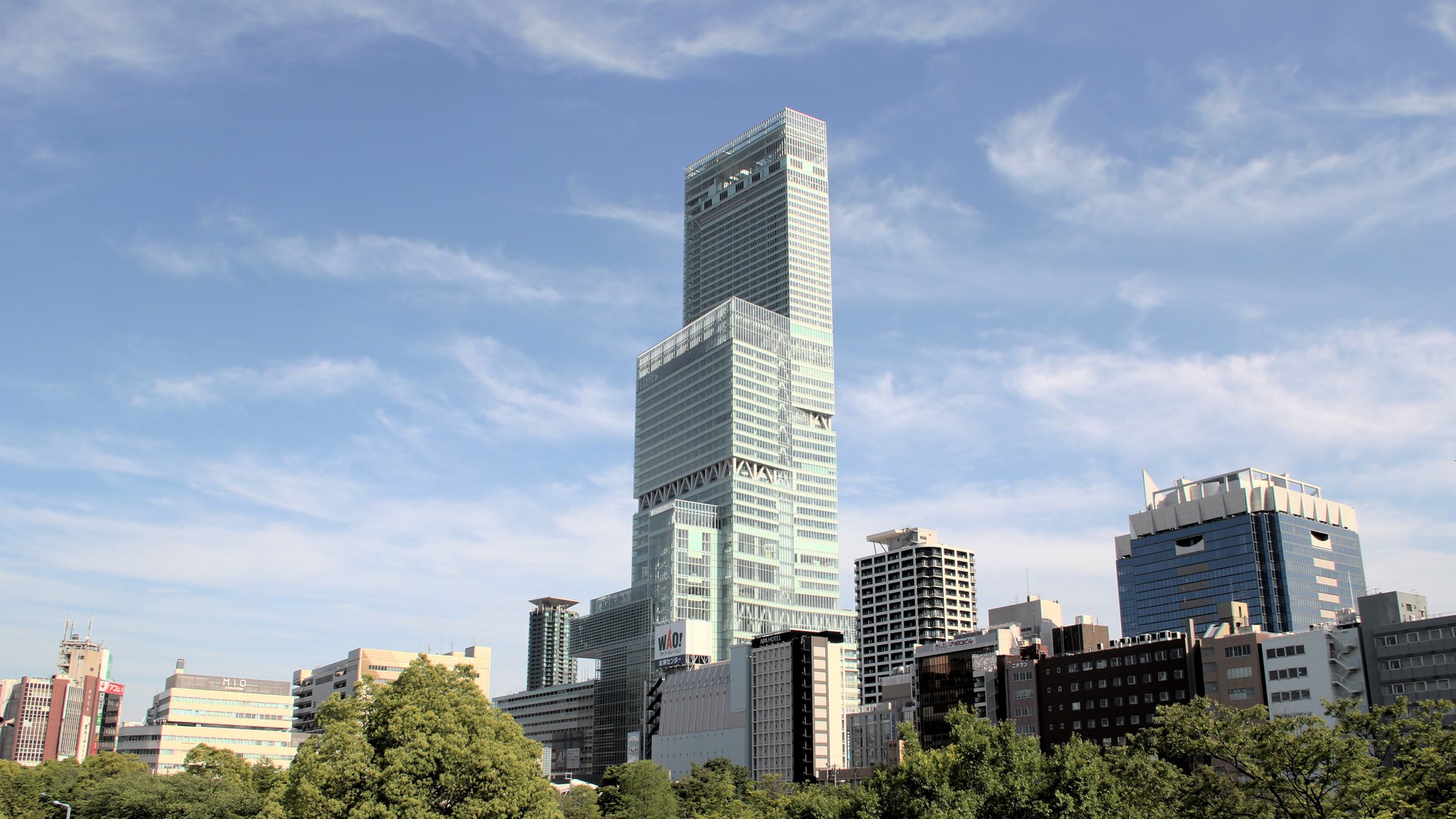
Enjoy a Comfortable Stay in Osaka! 10 Hotels with Convenient Airport Shuttle Services
-

Top 10 Recommended Hotels Near Namba Station with Great Access
-
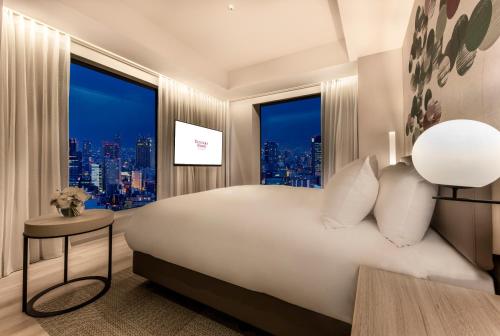
Enjoy Night Views from Your Room! Recommended Hotels in Namba Area
-

Dining in Kyoto: Best Restaurants for Kaiseki, Sushi, Cafes & More
-

Osaka Travel Service Center: So Many Incredibly Convenient Services - in English!
by: WESTPLAN
-

What is Momijigari? All About Japan's Fascinating Autumn 'Leaf-Hunting' Tradition
-

What to Do in Osaka & Kyoto in November: Top Events, Festivals, Fall Foliage & Illuminations
by: Kaori Kimura
-

8 Unfamiliar (But Totally Normal) Customs in Japan!
-

Visiting Kobe in Autumn: Ultimate Guide to Kobe Weather in Fall and Clothes You Need
by: WESTPLAN
- #best gourmet Osaka
- #things to do Osaka
- #what to do in kyoto
- #what to bring to japan
- #best gourmet Kyoto
- #new years in Osaka
- #what to buy in nanba
- #Visiting Osaka
- #onsen tattoo friendly arima
- #daiso
- #Visiting Kyoto
- #best japanese soft drinks
- #japanese fashion culture
- #japanese convenience store snacks
- #japanese nail trends


























